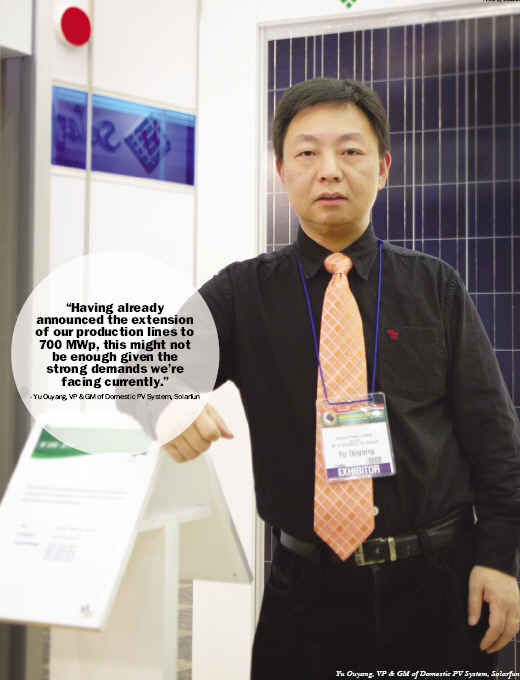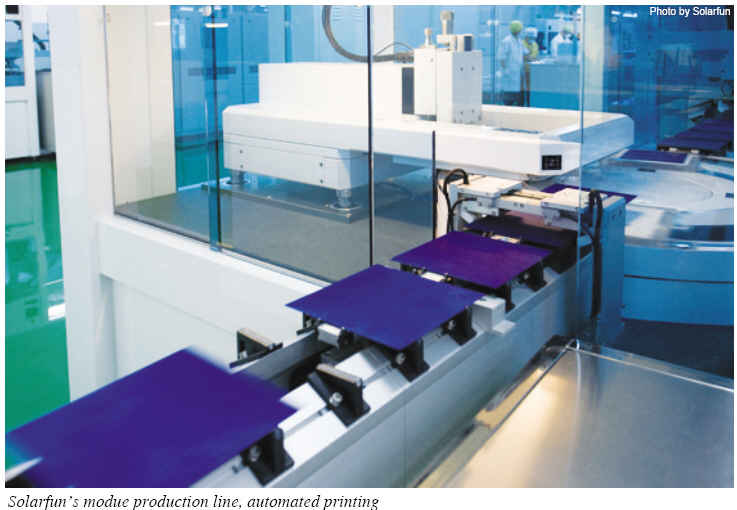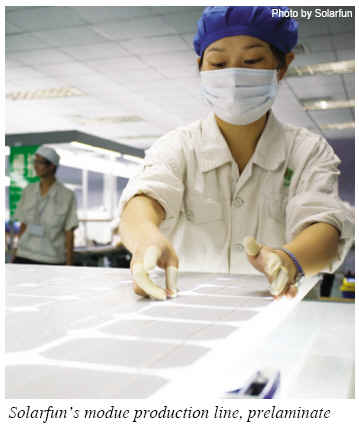BY JEANNY LIM (SWIED@INFOTHE.COM)
 Could you introduce your business plans and production goals for this year? Could you introduce your business plans and production goals for this year?
Solarfun will continue to execute on its growth plans. We believe in our customer base and the associated business potential, and strive hard to provide the necessary support on production output, product quality, cost controls and innovative products. Having already announced the extension of our production lines to 700 MWp, this might not be enough given the strong demands we¡¯re facing currently.
What is your strategy for the domestic Chinese market this year?
We are striving for a strong position in the Chinese market: Solarfun¡¯s 2010 focus is primarily on ¡®utility-scale projects¡¯ market vs. large-scale ¡®power plants¡¯, and developing/constructing projects as well as selling modules in China.
Solarfun has recently introduced ECLIPSE, a new line of PV cells and modules with reduced Light Induced Degradation (LID). What kind of contributions do you think this new line of products will make to the solar industry?
Well, Light Induced Degradation (LID) is lost at an early stage, this power output is lost for the whole life cycle of the product. When now this loss of power can be reduced significantly, better output results from the PV module can be achieved. Solarfun believes that with this line of products it provides its customers with a better cost-performance ratio.

And any new products in the pipeline for 2010?
Solarfun is continuously working on product innovations. These innovations target cell and module efficiencies, cell degradation and new applications. We have programs progressing which address all of the three topics. Therefore, you will see new products from Solarfun with higher efficiencies, lower degradation and for new applications. Announcements will be made in due course as the programs progress.
I understand your No. 1 market in Asia is China. What is your next target country in Asia?
Being a China-based company, we would do wrong not to address the Chinese market. But this does not mean we put our focus on the Chinese market only. In fact, we have sales people working in many other countries in Asia, such as Korea, to stay tuned with the developments in these markets and to be ready as these markets emerge further. This year, we will further develop sales in Korea and expand business in Japan and India.
What do you see as the most important market segments in China for the near future: residential, commercial, or utility scale projects?
I see utility-scale projects as the most important market segment in China.
When do you expect to see grid parity in China and in which market segment?
Grid parity is expected in 2015-2017 for utility-scale projects, after 2017 for commercial and residential.

What are the major threats to the solar industry at the moment in China?
The availability of materials at decent costs is certainly one threat. Global demand is very strong at this moment in time and the availability of PV products is short. Therefore, costs go up, leading to higher prices. At the same time, many investments in capacity expansions are progressing. It is important that material costs do not exceed a level that will require a price level that is not attractive for investments in PV plants anymore, therefore, reducing global demand. In such a case, the solar industry could face an overcapacity scenario soon.
What module price development do you expect for this and next year?
Currently, prices have stabilized at a slightly higher level than in Q4 last year. With FiT reductions in Europe, there will come some pressure on the pricing. We watch very carefully these developments but do not expect immediate price decreases in the second half of this year. Solarfun has not yet announced any price projections for next year.
Jeanny Lim is Editor-in-Chief of InterPV. Send your comments to swied@infothe.com.
For more information, please send your e-mails to pved@infothe.com.
¨Ï2010 www.interpv.net All rights reserved.
|



